Landscape Paving 101: Cast-in-Place Concrete
http://www.decor-ideas.org 09/05/2015 23:13 Decor Ideas
Cast-in-place concrete is ubiquitous in the building and construction industry. It is used for walkways, driveways and patios in all climates and all types of projects as a reliable and easy-to-install paving surface. It’s a budget-friendly option with a surface that can be easily altered with patterns, colors and textures.
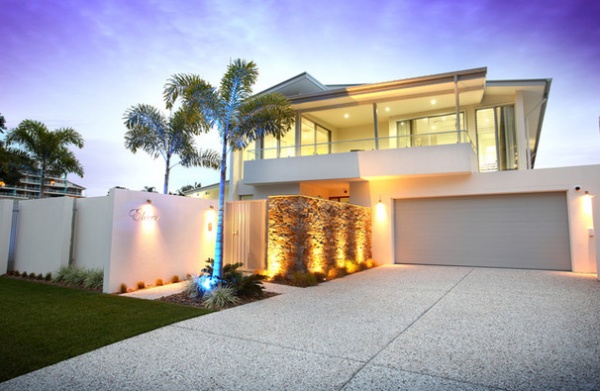
The basics: Concrete is a self-hardening mixture of sand or gravel and water that uses cement (a powdered mixture of lime and clay) as a binding agent. The exact composition of concrete varies depending on the location and use. For concrete that’s cast in place (also called CIP, poured or in situ concrete), water is added to the dry components at the construction site, then the mixture is poured in place with formwork to contain it and allowed to set, or cure, until it is hard.
Cost: $3 to $6 per square foot, installed
Shown: A CIP concrete driveway with rectangular score lines and an exposed aggregate finish
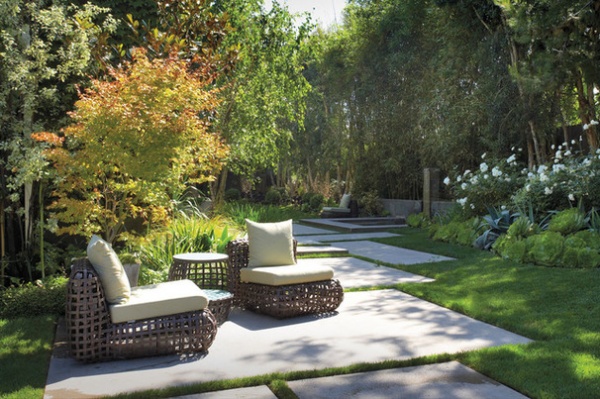
Pros
Suitable for all climatesVery affordableStandard building material that’s easy to source Easy to maintainCan be colored, sealed, stamped and finished in many different waysCons
Requires properly prepared subgrade and aggregate drainage layersRequires hardening or curing time and low humidity to set to its final hardnessCan crack over timeShown: A series of cast-in-place concrete rectangles separated by small strips of turfgrass. Each square was poured individually into formwork onsite.
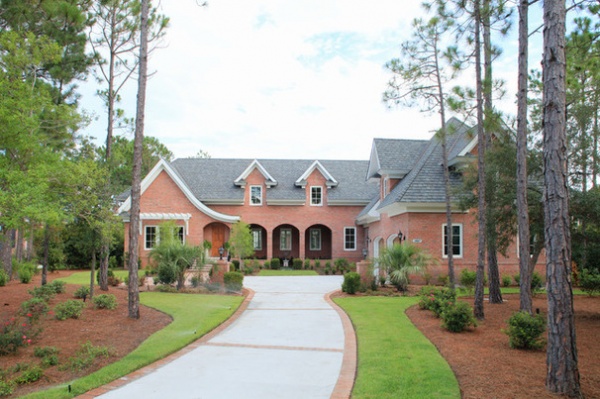
Size and color: Cast-in-place concrete is mixed per job onsite and poured into a wooden formwork. It can be built in any size and shape as long as it has sufficient scoring and expansion joints to help the concrete expand and contract without cracking.
The exact color of concrete depends on the proportions and ingredients used in the mix. There are regional differences between concrete mixes when locally sourced sand and gravel are used. Concrete color ranges from a crisp white — as with the decorative concrete throughout South Florida — to charcoal gray, as with mixtures that incorporate slag. Concrete that has an integrated bright color has had a dye additive mixed in. Color additives are available in a rainbow of options, but beware that the color will eventually fade.
Shown: Rectangular sections of cast-in-place concrete edged by a brick border, creating a driveway
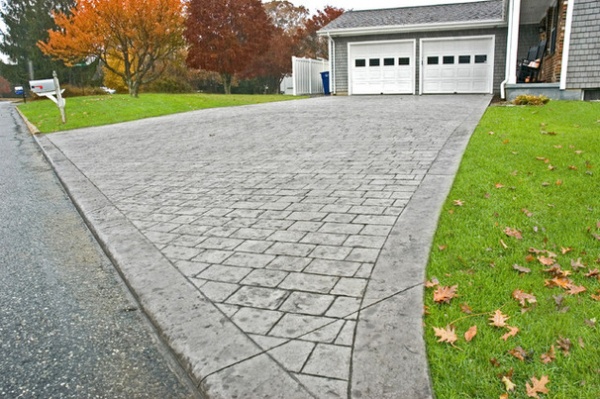
Finishes: Finishes make CIP concrete far more exciting. Many surface finish types are available; most of them are created after the concrete has been poured, while it is still wet.
Exposed aggregate: A layer of small stones or gravel is set into the top portion of the concrete after it has been poured.Scored pattern: A score is a ¼-inch-deep line that’s drawn into the concrete to help prevent cracking. Scores can create many different patterns: squares, rectangles, diamonds, flagstone, stripes and more.Textured (rock salt method): The concrete is given a slight texture with rock salt spread on top, which makes small indentations.Stamped: Created with a a colored additive or dye. A repeated pattern is stamped in a contrasting color.Broom: A fine-bristled, hard broom is lightly pushed over the surface to give the concrete a slight combed texture.Colored: Sealers, paints and dyes create a colored topcoat on the cured concrete.
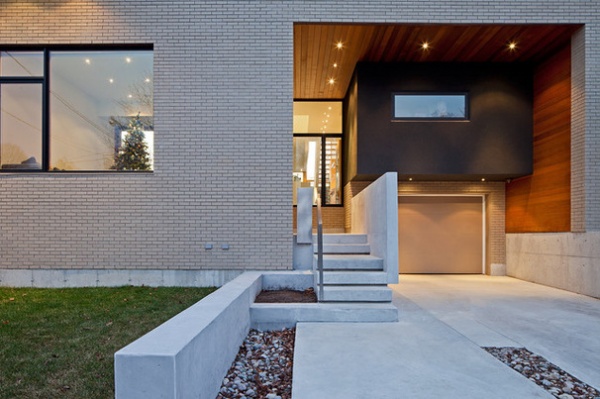
Sustainability: Pervious concrete is a new product on the market that allows water to infiltrate it and pass through to the soil below. Using pervious concrete is a way to reduce stormwater runoff. Additionally, concrete can be recycled — it can be crushed and repurposed as aggregate for other projects.
Shown: A walkway, a driveway, steps and a retaining wall made of smooth cast-in-place concrete
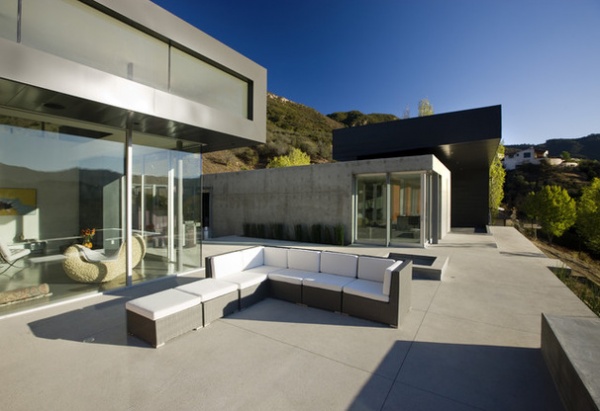
Maintenance: Cast-in-place concrete is relatively low-maintenance. It can be stained by fruit-tree berries, pecan husks and other acidic plant materials if the material is left to decay on the surface of the concrete. It can also be stained by automotive oils. Pressure-wash your concrete thoroughly every year to keep it in great shape. You can seal small cracks with a flexible epoxy made to fill in concrete cracks.
Shown: A cast-in-place concrete patio with a large square scoring pattern.
More
5 Ways to Get a More Beautiful Concrete Patio
See more patio ideas on Houzz
Related Articles Recommended












